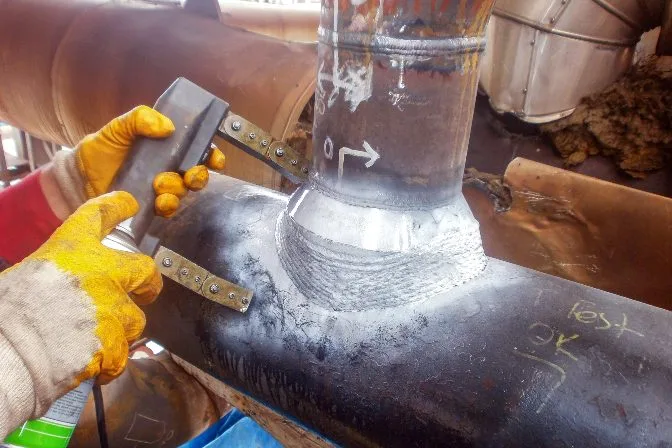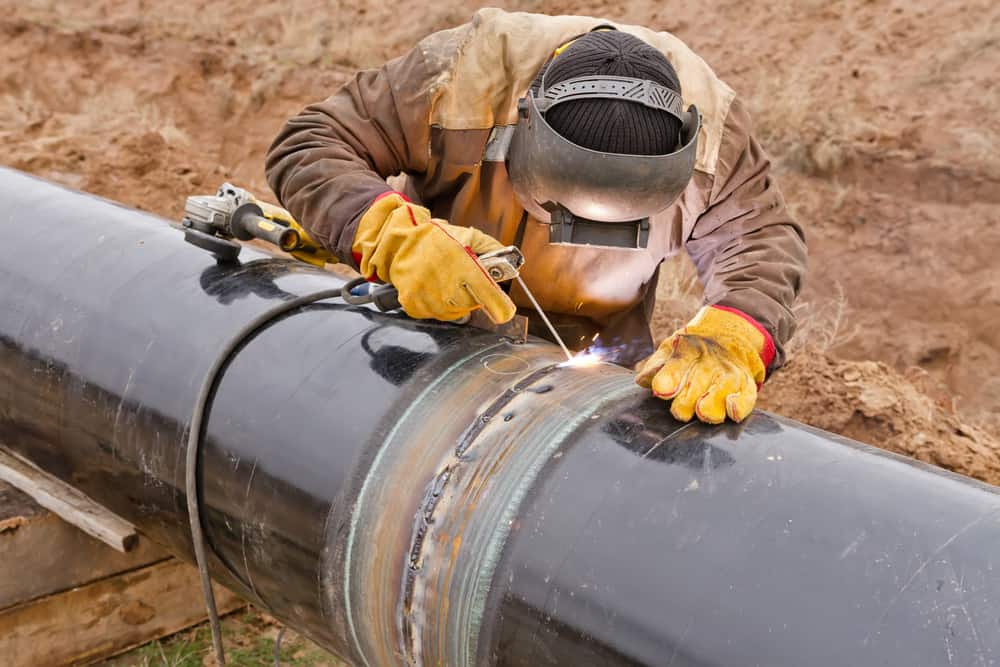Thorough Houston Welding Inspection for Improved Performance and Longevity
Thorough Houston Welding Inspection for Improved Performance and Longevity
Blog Article
The Vital Function of Welding Examination: Understanding the Procedures, Tools, and Requirement That Govern Top Quality Evaluation in Welding Workflow
Welding assessment is an essential part of high quality guarantee in welding operations, making sure the structural honesty and safety of welded assemblies. Comprehending the interplay in between assessment techniques and governing compliance increases essential concerns concerning the challenges dealt with in keeping these important protocols.
Relevance of Welding Assessment
Welding inspection is important in ensuring the stability and safety and security of bonded frameworks, as it regularly serves as the final checkpoint prior to elements are put into solution. The relevance of this inspection hinges on its capacity to recognize possible defects that may endanger the efficiency and long life of welded joints. Offered the high stakes entailed, specifically in markets such as building and construction, aerospace, and automotive, detailed assessment processes are indispensable.
Welding flaws can emerge from various factors, consisting of inappropriate strategies, poor devices, or improper materials. Failure to spot these issues can lead to devastating repercussions, consisting of structural failures, which might lead to injury, death, and significant financial obligations. Welding evaluation offers a systematic method to examine the high quality of welds, making sure compliance with industry requirements and governing needs.
Additionally, reliable welding assessment contributes to improving general productivity by minimizing rework and ensuring that jobs remain on time. By promoting a culture of quality assurance, organizations can likewise improve their credibility and customer trust. In essence, the significance of welding examination can not be overemphasized, as it plays a pivotal duty in safeguarding both human lives and financial investments in infrastructure.
Key Assessment Procedures
An extensive method to evaluation treatments is vital for ensuring the high quality and reliability of welded joints. Effective assessment begins with pre-weld evaluations, which consist of assessing welding specs, product properties, and joint designs to recognize prospective challenges. This prep work stage develops a baseline for top quality expectations.
Throughout the welding process, in-process assessments are critical. Assessors monitor specifications such as warm input, traveling speed, and electrode angle to make sure conformity with recognized criteria. Aesthetic evaluations are the initial line of protection, enabling the identification of surface problems, such as cracks, porosity, or insufficient blend.
Post-weld evaluations include advanced methods to analyze the integrity of the joint. This may consist of non-destructive screening (NDT) methods such as ultrasonic testing, radiographic testing, or magnetic bit testing. These methods supply deeper understandings into the internal structure of the weld, disclosing possible flaws that may not be visible externally.
Documentation plays an essential function throughout the assessment procedure. Detailed records of assessments, including findings and restorative activities, make sure traceability and accountability, inevitably contributing to continual renovation in welding practices and overall quality assurance.
Essential Equipment for Inspection
Reliable examination counts on using customized tools designed to review the top quality and stability of welded joints. Trick devices in this procedure include visual inspection devices, such as multiplying glasses and borescopes, which allow assessors to recognize surface defects and abnormalities. Furthermore, ultrasonic testing (UT) devices plays a crucial duty by utilizing high-frequency audio waves to spot internal problems within welds, guaranteeing that concealed weaknesses are recognized prior to they cause failure.
Radiographic screening (RT) is another crucial approach, using X-rays or gamma rays to generate photos of the welds, disclosing interior defects that may not show up with various other inspection methods - Houston Welding Inspection. Magnetic particle screening (MT) is utilized for ferromagnetic products, enabling inspectors to locate surface and near-surface issues by using magnetic areas and fine bits
Dye penetrant testing (PT) is also substantial, entailing the application of a fluorescent color to expose surface cracks and stoppages. Each of these strategies and tools adds to an extensive examination technique, ensuring that bonded structures satisfy the needed top quality standards and continue to be safe for usage in their corresponding applications.

Sector Specifications and Rules
Quality control in welding evaluation is significantly affected by industry requirements and laws that control techniques and guarantee safety and security. These standards act as standards for top quality, describing the necessary methods for documents, assessment, and screening. Key organizations such as the American Welding Society (AWS), the American Society of Mechanical Designers (ASME), and the International Organization for Standardization (ISO) develop guidelines that welding experts need to stick to throughout the examination procedure.
Compliance with these criteria is not only a matter of regulative obligation yet additionally a vital part of risk management in welding operations. They encompass numerous elements, including product choice, welding methods, and certifications of employees. AWS D1.1 describes structural welding demands, while ISO 3834 specifies high quality needs for welding procedures.
Moreover, industry regulations dictate the necessary credentials for welding assessors, necessitating qualifications that affirm their competence. This placement with standards guarantees that assessments are carried out consistently and look what i found accurately, eventually protecting the honesty of welded frameworks. Abiding by these sector standards and guidelines is paramount in advertising operational performance and keeping public rely on welding methods.
Challenges in Welding Evaluation


Welding examination encounters various obstacles that can influence the dependability and security of bonded frameworks. One substantial difficulty is the complexity of the welding refines themselves, which can differ substantially depending upon products, joint arrangements, and ecological conditions. This variability requires a comprehensive understanding of diverse assessment methods and their ideal applications.
An additional difficulty exists in the advancing nature of welding technology. As brand-new products and methods are presented, inspectors have to continuously update their expertise and skills to effectively examine the quality of welds. In addition, the physical availability of weld places can impede examination initiatives, particularly in constrained or high-risk settings.
Furthermore, human variables play a vital role in welding assessment. Houston Welding Inspection. The subjective nature of aesthetic evaluations can bring about disparities, as different inspectors might analyze the same weld in different ways. This underscores the value of standardized training and qualification for inspectors to ensure an uniform approach to top quality assessment
Finally, the integration of advanced innovations, such as automated examinations and expert system, provides both difficulties and possibilities. While these technologies can improve accuracy and performance, they also require considerable investment and know-how to try this site apply effectively. Dealing with these obstacles is crucial for preserving the stability of welded frameworks.
Final Thought
Welding examination is essential for ensuring the safety and security and integrity of welded structures. Via extensive assessment treatments, using customized devices, and adherence to recognized market standards, the top quality of welding procedures can be systematically assessed. Challenges continue the evaluation process, yet the execution of reliable approaches can alleviate threats connected with structural failings. Eventually, a durable welding assessment structure not just ensures conformity with guidelines but also boosts total functional performance and reliability.
Welding inspection is try this a vital element of high quality assurance in welding operations, guaranteeing the structural integrity and security of welded settings up.Welding examination is crucial in making certain the honesty and safety of welded structures, as it regularly serves as the last checkpoint before parts are put right into service. Welding examination gives an organized approach to examine the quality of welds, making sure conformity with market criteria and regulative demands.
Quality assurance in welding assessment is significantly affected by industry criteria and regulations that regulate methods and make certain safety and security. Secret organizations such as the American Welding Society (AWS), the American Society of Mechanical Engineers (ASME), and the International Company for Standardization (ISO) develop guidelines that welding specialists need to adhere to throughout the examination process.
Report this page